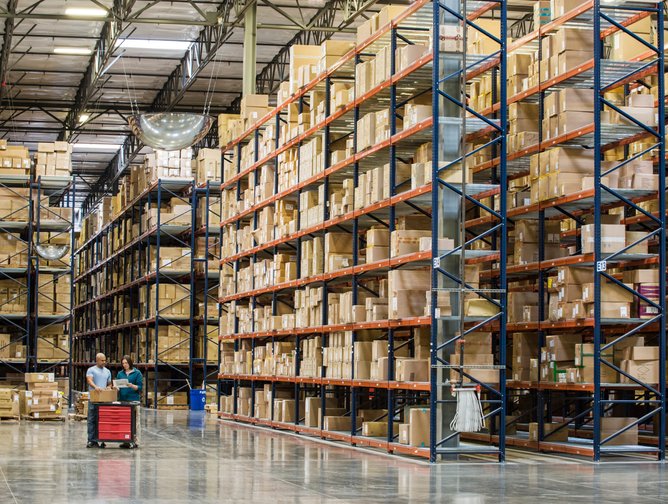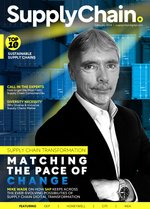Supply Chain Transformation: Matching the Pace of Change
When Mike Wade reflects on the business he arrived at in January 2012, SAP has been in the fast-lane in terms of the growth of the business, and the technology it develops. As the company helps lead the way in procurement and supply chain solutions technology, he is proud to step back and appreciate the extraordinary level of change there has been at the company and in the industry. “The business is hugely different from when I joined on the 1st of January, 2012,” he says. “At that time, we were an on-premise organisation, and now as I begin my 13th year, we're a cloud organisation and the last three years we've absolutely accelerated that transition.”
The technological revolution of cloud computing and the explosion of Gen-AI in that time has boosted the change, and Wade is proud to be playing his part in that change as Head of Digital Supply Chain in EMEA South. What has not changed though is the mentality of making sure the technology serves the customer to achieve and exceed their expectations. “We bring the customer requirements and the technology together,” he explains. “But the technology, without understanding the customer and how we can deploy it, doesn't mean too much.”
A journey from the shop-floor to leadership
Wade is a self-confessed ‘process guy’ and speaks passionately about the professional satisfaction he gets from knowing he has delivered for his customers, and for his team. The other is the feeling of knowing he has contributed to moving the business forward in some small way thanks to the activities of the day.
After considering a career in finance, Wade found his way into the world of supply chain management at a first job at a freight forwarding company at London Heathrow airport. This led to roles in a UK Logistics Provider, at UK retailer The Body Shop and then a Warehouse Management Systems provider called EXE Technologies who particularly wanted to recruit people with an operational background. “They wanted people who could go into customers with operational credibility to help the sale, and it was the best thing I ever did,” says Wade.
That role evolved over 13 years through company acquisitions, which introduced him to the world of ERP and , Procurement, MRP & Manufacturing, putting him in a unique position with a skill-set of operations, leadership and technology. He feels that a mix of experiences allows him to have empathy with his customers, as by beginning at entry level and working through different functions, it allows a greater understanding of their needs.
“I can think of one example when I was with a manufacturing business in Italy,” he recalls. “I walked the shop floor with the manufacturing director, and we talked in the same language. I was able to understand what he was talking about and empathise, and it is because I've come through those experiences. So now I'm in leadership. I understand what it's like to be a sales executive, the daily life, and I find it's always helped me.”
Understanding SAP customers
SAP needs little introduction as one of the world’s leading producers of software for business management. It has grown since 1972 when known as System Analysis Programme Development (Systemanalyse Programmentwicklung) with five people on the payroll, to a multinational, with more than 105,000 employees worldwide. From their headquarters in Walldorf, Germany, they have more than 230m cloud users, and over 100 solutions covering a wide range of business functions.
Reflecting on SAP, Wade again returns to the strength of relationships with their customer base. “Our North Star is always our customers and I'm pleased to say that the solution area that I represent, Digital Supply Chain, continues to see significant growth” he says. “I think developing and releasing technology is good and essential, but it means nothing unless you understand your customer and how that can be applied in their business. So, the most important thing is that we listen to our customers.”
The pace of digital change
There is a direct correlation between the greatest challenges facing customers and the company, and the most exciting areas of progress in digital transformations to supply chains. Wade thoughtfully explores that connection, knowing it is also a huge opportunity for both parties.
“The pace and the drumbeat at which we operate with our customers now is much, much faster,” he says. “If you said to me which of the main changes between SAP on the 1st of January, 2012 to here and now, it is the technology that we've developed, and it's the speed at which we can develop and release it. That's the big game changer.”
This progression excites Wade, as SAP keeps up with the pace of change, but he says it brings a greater level of influence for the company. “It brings with it a big responsibility because our customers expect us to move at that pace now,” he continues. “In the cloud world, when the customer makes their initial investment, that is just the beginning of the journey. Now we come alongside the customer and make sure that they're adopting and consuming the technology. That is the big change, probably the most significant change in the 12 years that I've been with the organisation.”
It is a fundamental evolution in the change of relationship between the tech provider and customer, and has happened at a time of persistent disruption to supply chains that demand resilience and rapid responses. Wade steps back and looks at the unprecedented disruption of the pandemic between 2020 and 2022, followed by the ongoing geopolitical challenges currently facing the world. He feels this period of history has brought the questions of supply chain disruptions into sharp focus as they become front page news. The key question remains exactly how SAP’s strategy is shaped by these events.
“The strategy is all about enabling our customers to operate resilient and sustainable supply chains,” explains Wade. “It is all about giving them the ability to manage disruptions in a much more forward-looking way than they were before.”
This is where the influence of AI and Gen-AI begins to prove invaluable, as customers can now integrate this into their supply chain planning process and run impact scenarios even before they have executed a strategy.
Using AI in an uncertain world
This ability to look into a likely or potential future is a critical tool for customers, as they try to keep pace with an unpredictable trading environment and help them be prepared for more eventualities than ever before. “They're looking at risk registers within their supply chains, this is something that's been there for a while, but we're seeing it now becoming almost routine in those organisations,” adds Wade. “The ability to run a range of ‘what if’ scenarios and risk registers early and our strategy in the digital supply chain is to enable our customers to do that.”
The integration of AI technology is a vital tool in helping SAP’s solutions keep pace with the accelerating pace of change. Wade looks ahead and feels the range of use cases will continue to grow in terms of how AI can support supply chains operate. When this is combined with the pre-existing package of solutions they provide business, it promises to be a powerful mix of technology.
“We already connect the business processes end to end in a way that no one else can. When you augment it with AI, I think it puts our customers in a place where they really could empower the supply chain community in their organisation in a way that they couldn't before.”
Internal and external partnerships
Even with the scale and experience of a company like SAP, Wade knows the immense value of their partner ecosystem, describing it as at the centre of their strategy. He’s mindful that with SAP covering every corner of the globe, with customers from SMEs to global corporations, there is a huge complexity to that network that needs the help of partners to implement their solutions.
“Anyone that knows, SAP knows we have a huge ecosystem, and whenever I meet our partners, I always thank them because we can't do it on our own,” says Wade, understanding the importance of the relationship. “The real investment begins post the sale because in the cloud world it's all about adoption and consumption and driving the business value, what we call the Customer Value Journey. SAP is actively invested in our customers success.”
When SAP partners with another organisation, Wade says they have to have absolute trust in their ability to represent the standards SAP demands. One example he suggests is Camelot ITLab who is a long-standing implementation partner of SAP, with a 25 year record of collaboration. They have worked together on joint co-innovations and a proud track record of more than 350 large scale SAP transformations.
They were also a strategic co-development partner for SAP IBP to bring DDMRP capabilities into preferred SAP Supply Chain Solutions. “Camelot is a very good and longstanding partner of SAP and especially in the digital supply chain area,” says Wade. “I know the customers that work with them and the customers that potentially will work with them in the future, will get the service and the quality of delivery that they're expecting.”
As businesses try to leverage technology to keep pace with change, Wade has advice on how you can maximise the potential of digital transformation by having solid internal partnerships and executive buy-in. He refers to one recent example where the programme has strong board sponsorship and mandate, to the level the transformation was also celebrated in quarterly results. “Why has it been so successful? Why has it happened on time? And by the way, why has it happened on budget?” says Wade in examining why the implementation has been so successful. “Because the board was behind it, got their shoulder behind it and totally sponsored it.”
Earning your place in the market
With the pace of change growing, Wade is clear on how SAP can continue to grow, innovate and succeed in the next 12 to 18 months. That is not to take anything for granted and to ensure their focus never slips from the success of their customers. He knows they always have alternatives as fierce competition in the technology marketplace intensifies with each new release, update and AI innovation.
“We know our customers always have options and choices, so we earn the right to be selected for any investment that they make,” continues Wade. “We have to listen to our customers and help them achieve their digital transformation. We always make sure that we're sharp, we deliver the best technology in the market, and I know I can speak for my team in the Digital Supply Chain. I think we're the best in the market.”
Wade is confident in their products, and SAP’s ability to help their customers get the best from them, but he does remain humble trusting those customers to do their own research and make informed decisions. “A buyer will want to know where have you done this before? Can I talk to that company who has done it before?” he explains frankly. “We are fortunate that we can point our customers to other customers and then they can make the decision based on solid fact.”
Make sure you check out the latest edition of Supply Chain Digital Magazine and also sign up to our global conference series - Procurement & Supply Chain LIVE 2024
**************
Supply Chain Digital is a BizClik brand






